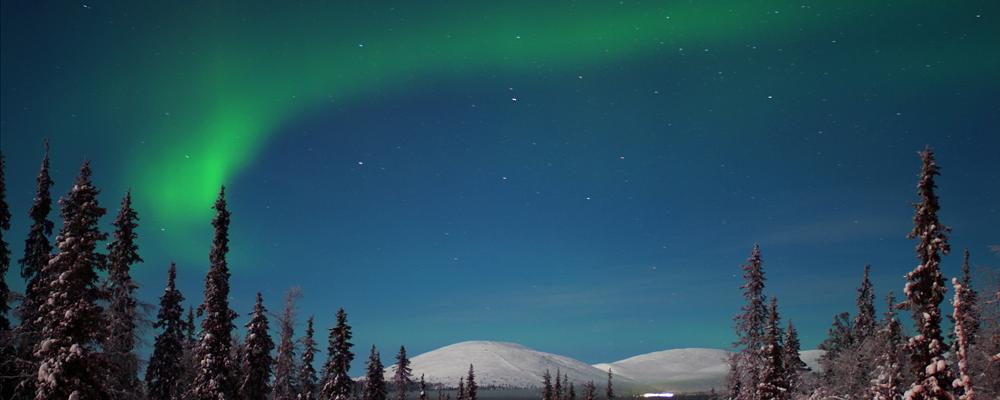
Finland
( 1 user review )Finland (Finnish: Suomi, Swedish: Finland) is in Northern Europe and has borders with Russia to the east, Norway to the north, and Sweden to the west. The country is thoroughly modern with well-planned and comfortable small towns and cities, but still offers vast areas of unspoiled nature. Finland has approximately 188,000 lakes (about 10% of the country) and a similar number of islands. In the northernmost part of the country the Northern Lights can be seen in the winter and midnight sun in the summer. Finns also claim the mythical mountain of Korvatunturi as the home of Santa Claus, and a burgeoning tourist industry in Lapland caters to Santa fans. Despite living in one of the most technologically developed countries in the world, the Finns love to head to their summer cottages in the warmer months to enjoy all manner of relaxing pastimes including sauna, swimming, fishing and barbecuing.
Understand
History
Not much is known about Finland's early history, with archaeologists still debating when and where a tribe of Finno-Ugric speakers cropped up. Roman historian Tacitus mentions a tribe primitive and savage Fenni in 100 AD, even the Vikings chose not to settle, trading and plundering along the coasts.
In the mid-1150s Sweden started out to conquer and Christianize the Finnish pagans in earnest, with Birger Jarl incorporating most of the country into Sweden in 1249. Finland stayed an integral part of Sweden until the 19th century, although there was near-constant warfare with Russia on the eastern border and two brief occupations. After Sweden's final disastrous defeat in the Finnish War of 1808-1809, Finland became an autonomous grand duchy under Russian rule after 1809.
Russian rule alternated between tolerance and repression, and there was already a significant independence movement when Russia plunged into war and revolutionary chaos in 1917. Parliament seized the chance and declared independence in December, quickly gaining Soviet assent, but the country promptly plunged into a brief but bitter civil war between the conservative Whites and the Socialist Reds, eventually won by the Whites.
During World War II, Finland was attacked by the Soviet Union in the Winter War, but fought them to a standstill that saw the USSR conquer 12% of Finnish territory. Finland then allied with Germany in an unsuccessful attempt to repel the Soviets and regain the lost territory, was defeated and, as a condition for peace, had to turn against Germany instead. Thus Finland fought three separate wars during World War II. In the end, Finland lost much of Karelia and Finland's second city Vyborg, but Soviets paid a heavy price for them with over 300,000 dead.
After the war, Finland fell into the Soviet sphere of influence and toed the Russian line on foreign policy, but maintained a studied policy of official neutrality and managed to retain a free market economy and multi-party elections, building close ties with its Nordic neighbors. This balancing act of Finlandization was humorously defined as "the art of bowing to the East without mooning to the West". While there were some tense moments, Finland pulled it off: in the subsequent half century, the country made a remarkable transformation from a farm/forest economy to a diversified modern industrial economy featuring high-tech giants like Nokia, and per capita income is now on par with Western European countries.
After the implosion of the USSR, Finland joined the European Union in 1995, and was the only Nordic state to join the euro system at its initiation in January 1999.
Geography
Unlike craggy Norway and Sweden, Finland consists mostly low, flat to rolling plains interspersed with lakes and low hills, with mountains (of a sort) only in the extreme north and Finland's highest point, Mount Halti, rising only to a modest 1,328 m. Finland has 187,888 lakes according to the Geological Survey of Finland, making the moniker Land of a Thousand Lakes actually an underestimation. Along the coast and in the lakes are—according to another estimate—179,584 islands, making the country an excellent boating destination as well.
Finland is not located on the Scandinavian peninsula, so despite many cultural and historical links, it is technically not considered a part of Scandinavia. Even Finns rarely bother to make the distinction, but a more correct term that includes Finland is the "Nordic countries" (Pohjoismaat).
Climate
Finland has a cold but temperate climate, which is actually comparatively mild for the latitude because of the moderating influence of the North Atlantic Current. Winter, however, is just as dark as everywhere in these latitudes, and temperatures can (very rarely) reach -30°C in the south and even dip below -50°C in the north. The brief Finnish summer is considerably more pleasant, with average temperatures around +20°C, and is generally the best time of year to visit. July is the warmest month with temperatures up to +30°C. Early spring (March-April) is when the snows start to melt and Finns like to head north for skiing and winter sports, while the transition from fall to winter in October-December — wet, rainy, dark and generally miserable — is the worst time to visit.
Due to the extreme latitude, Finland experiences the famous Midnight Sun near the summer solstice, when (if above the Arctic Circle) the sun never sets during the night and even in southern Finland it never really gets dark. The flip side of the coin is the Arctic Night (kaamos) in the winter, when the sun never comes up at all in the North. In the South, daylight is limited to a few pitiful hours with the sun just barely climbing over the trees before it heads down again.
Culture
Buffeted by its neighbors for centuries and absorbing influences from west, east and south, Finnish culture as a distinct identity was only born in the 19th century: "we are not Swedes, and we do not wish to become Russian, so let us be Finns."
The Finnish founding myth and national epic is the Kalevala, a collection of old Karelian stories and poems collated in 1835 that recounts the creation of the world and the adventures of Väinämöinen, a shamanistic hero with magical powers. Kalevalan themes such as the Sampo, a mythical horn of plenty, have been a major inspiration for Finnish artists, and figures, scenes and concepts from the epic continue to color their works.
While Finland's state religion is Lutheranism, a version of Protestant Christianity, the country has full freedom of religion and for the great majority everyday observance is lax or nonexistent. Still, Luther's teachings of strong work ethic and a belief in equality remain strong, both in the good (women's rights, non-existent corruption) and the bad (conformity, high rates of depression and suicide). The Finnish character is often summed up with the word sisu, a mixture of admirable perseverance and pig-headed stubbornness in the face of adversity.
Finnish music is best known for classical composer Jean Sibelius, whose symphonies continue to grace concert halls around the world. Finnish pop, on the other hand, has only rarely ventured beyond the borders, but heavy metal bands like Nightwish and HIM have garnered some acclaim and latex monsters Lordi hit an exceedingly unlikely jackpot by taking home the Eurovision Song Contest in 2006.
In the other arts, Finland has produced noted architect and designer Alvar Aalto, authors Mika Waltari (Sinuhe) and Väinö Linna (The Unknown Soldier), and painter Akseli Gallen-Kallela, known for his Kalevala illustrations.
Bilingualism
Finland has a 5.6% Swedish-speaking minority and is officially a bilingual country, so maps nearly always bear both the Finnish and Swedish names for eg. cities and towns. For example, Turku and Åbo are the same city, even though the names differ totally. Roads can be especially confusing: what first appears on a map to be a road that changes its name is, in most cases, one road with two names. This is common in the Swedish-speaking areas on the southern and western coasts, whereas in the inland Swedish names are far less common. In far north Lapland, you'll almost never see Swedish, but you will occasionally see signage in Sámi instead.
Holidays
Finns aren't typically very hot on big public carnivals; most holidays are spent at home with family. The most notable exception is Vappu on May 1, as thousands of people (mostly the young ones) fill the streets. Important holidays and similar happenings include:
-
New Year's Day (Uudenvuodenpäivä), January 1.
-
Epiphany (Loppiainen), January 6.
-
Easter (Pääsiäinen), variable dates, Good Friday and Easter Monday are public holidays. Tied to this are laskiainen 40 days before Easter, nominally a holy day that kicks off the Lent, practically a time for children and university students to go sliding down snowy slopes, and Ascension Day (helatorstai) 40 days after, just another day for the shops to be closed.
-
Walpurgis Night or more often Vappu, May 1, although festivities start the day before (Vappuaatto**). A spring festival that coincides with May Day. Originally a pagan tradition that coincides with the more recent workers' celebration, it has become a giant festival for students, who wear colorful signature overalls and roam the streets. Many people also use their white student caps between 6PM at April 30 and the end of May 1st. Even though drinking alcohol in public places is prohibited in Finland, the police have absolutely no resources to control thousands of people in the streets and parks! The following day, people gather to nurse their hangovers at open-air picnics, even if it's raining sleet.
-
Midsummer Festival (Juhannus), Saturday between June 20 and June 26. Held to celebrate the summer solstice, with plenty of bonfires, drinking and general merrymaking. Cities become almost empty as people rush to their summer cottages. Might be a good idea to visit one of the bigger cities just for the eerie feeling of an empty city.
-
Independence Day (Itsenäisyyspäivä), December 6. A fairly somber celebration of Finland's independence from Russia. The President holds a ball for the important people that the less important watch on TV.
-
Little Christmas (Pikkujoulu), people go pub crawling with their workmates throughout December. Not an official holiday, just a Viking-strength version of an office Christmas party.
-
Christmas (Joulu), December 24 to 26. The biggest holiday of the year, when pretty much everything closes for three days. Santa (Joulupukki) comes on Christmas Eve on December 24, ham gets eaten and everyone goes to sauna.
-
New Year's Eve (Uudenvuodenaatto), December 31. Fireworks time!
Typical vacation time is in July, unlike elsewhere in Europe, where it is in August. The midsummer time is also vacationing time. During these days, cities are likely to be less populated, as Finns head for their summer cottages.
History
Not much is known about Finland's early history, with archaeologists still debating when and where a tribe of Finno-Ugric speakers cropped up. Roman historian Tacitus mentions a tribe primitive and savage Fenni in 100 AD, even the Vikings chose not to settle, trading and plundering along the coasts.
In the mid-1150s Sweden started out to conquer and Christianize the Finnish pagans in earnest, with Birger Jarl incorporating most of the country into Sweden in 1249. Finland stayed an integral part of Sweden until the 19th century, although there was near-constant warfare with Russia on the eastern border and two brief occupations. After Sweden's final disastrous defeat in the Finnish War of 1808-1809, Finland became an autonomous grand duchy under Russian rule after 1809.
Russian rule alternated between tolerance and repression, and there was already a significant independence movement when Russia plunged into war and revolutionary chaos in 1917. Parliament seized the chance and declared independence in December, quickly gaining Soviet assent, but the country promptly plunged into a brief but bitter civil war between the conservative Whites and the Socialist Reds, eventually won by the Whites.
During World War II, Finland was attacked by the Soviet Union in the Winter War, but fought them to a standstill that saw the USSR conquer 12% of Finnish territory. Finland then allied with Germany in an unsuccessful attempt to repel the Soviets and regain the lost territory, was defeated and, as a condition for peace, had to turn against Germany instead. Thus Finland fought three separate wars during World War II. In the end, Finland lost much of Karelia and Finland's second city Vyborg, but Soviets paid a heavy price for them with over 300,000 dead.
After the war, Finland fell into the Soviet sphere of influence and toed the Russian line on foreign policy, but maintained a studied policy of official neutrality and managed to retain a free market economy and multi-party elections, building close ties with its Nordic neighbors. This balancing act of Finlandization was humorously defined as "the art of bowing to the East without mooning to the West". While there were some tense moments, Finland pulled it off: in the subsequent half century, the country made a remarkable transformation from a farm/forest economy to a diversified modern industrial economy featuring high-tech giants like Nokia, and per capita income is now on par with Western European countries.
After the implosion of the USSR, Finland joined the European Union in 1995, and was the only Nordic state to join the euro system at its initiation in January 1999.
Climate
Finland has a cold but temperate climate, which is actually comparatively mild for the latitude because of the moderating influence of the North Atlantic Current. Winter, however, is just as dark as everywhere in these latitudes, and temperatures can (very rarely) reach -30°C in the south and even dip below -50°C in the north. The brief Finnish summer is considerably more pleasant, with average temperatures around +20°C, and is generally the best time of year to visit. July is the warmest month with temperatures up to +30°C. Early spring (March-April) is when the snows start to melt and Finns like to head north for skiing and winter sports, while the transition from fall to winter in October-December — wet, rainy, dark and generally miserable — is the worst time to visit.
Due to the extreme latitude, Finland experiences the famous Midnight Sun near the summer solstice, when (if above the Arctic Circle) the sun never sets during the night and even in southern Finland it never really gets dark. The flip side of the coin is the Arctic Night (kaamos) in the winter, when the sun never comes up at all in the North. In the South, daylight is limited to a few pitiful hours with the sun just barely climbing over the trees before it heads down again.
Regions
- - The southern stretch of coastline up to the Russian border, including the capital Helsinki and the historical province of Uusimaa (Nyland)|
- - The coastal areas, the old capital Turku, Finland's number two city Tampere and the southern parts of the historical province of Ostrobothnia (Pohjanmaa, Österbotten) |
- - Forests and lakes by the Russian border, including Savonia (Savo) and the Finnish side of Karelia (Karjala)|
- - Kajanaland (Kainuu) and northern Ostrobothnia, named after the technology city of Oulu. |
- - Tundra and reindeer above the Arctic Circle. |
- - an autonomous and monolingually Swedish group of islands off the southwestern coast of Finland |
While a convenient and unambiguous bureaucratic division, the provinces do not really correspond to geographical or cultural boundaries very well. Other terms you may hear include Tavastia (Häme), covering a large area of central Finland around Tampere, and Karelia (Karjala) to the far east, the bulk of which was lost to the Soviet Union in World War II (still a sore topic in some circles).
Cities
Other destinations
-
National parks
-
Ski resorts
-
Levi
-
Saariselkä
-
Ylläs
-
Getting there
Finland is a signatory to the Schengen treaty, so visas for the rest of the EU are valid in Finland as well. Visa requirements for individual countries are available at the the Finnish Foreign Ministry website .
By plane
Finland's main international hub is Helsinki-Vantaa Airport near Helsinki. Finnair , Blue1 , Air Finland and Finncomm Airlines are based there. Around 30 foreign airlines fly to Helsinki-Vantaa, including low-cost carrier Easyjet from London.
Ryanair's Finland hub is in Tampere, with flights around Europe. Other airlines have limited regional services to other cities, mostly just to Sweden, and, in the winter high season, occasional direct charters (especially in December) and seasonal scheduled flights (Dec-Mar) to Lapland. It may also be worth your while to get a cheap flight to Tallinn and follow the boat instructions below to get to Finland.
By train
VR and Russian Railways have two direct train services daily from Helsinki to Saint Petersburg and one daily to Moscow in Russia. There are no direct trains between Sweden or Norway and Finland (the rail gauge is different), but the bus over the gap from Boden/Luleå (Sweden) to Kemi (Finland) is free with an Eurail/Inter Rail pass, and you can also get a 50% discount from most ferries with these passes.
By bus
Buses are the cheapest but also the slowest and least comfortable way of traveling between Russia and Finland.
-
Regular scheduled buses run between St. Petersburg, Vyborg and major southern Finnish towns like Helsinki, Lappeenranta, Jyväskylä and all the way west to Turku, check Matkahuolto for schedules. Helsinki-St. Petersburg is served three times daily, costs €38 and takes 9 hours during the day, 8 hours at night.
-
Various direct minibuses run between St. Petersburg's Oktyabrskaya Hotel (opp Moskovsky train station) and Helsinki's Tennispalatsi (Eteläinen Rautatiekatu 8, one block away from Kamppi). At €15 one-way, this is the cheapest option, but the minibuses leave only when full. Departures from Helsinki are most frequent in the morning (around 10 AM), while departures from St. Petersburg usually overnight (around 10 PM).
By boat
One of the best ways to travel to and from Finland is by sea. The boats to Estonia and Sweden, in particular, are giant, multi-story floating palaces and department stores, with cheap prices subsidized by sales of tax-free booze: a return trip to Tallinn including a cabin for up to four people can go as low as €50. If travelling by Inter Rail, you can get 50% off deck fares. The best way to arrive in Helsinki is standing on the outside deck with a view ahead.
Estonia and the Baltic states
Helsinki and Tallinn are only 80 km apart, making this the busiest route in the country. Viking Line , Eckerö and Tallink Silja operate full-service car ferries all year round. Depending on the ferry type travel times are from slightly over two hours (Viking Line and Tallink Silja's Star, Superstar and Superfasts) to three and a half hours (Eckerö and Tallink Silja's biggest cruise ships). Some services travel overnight and park outside the harbor until morning. Linda Line offers fast services that complete the trip in 1.5 hours, but charge quite a bit more, have comparatively little to entertain you on board and suspend services in bad weather and during the winter. If the weather is looking dodgy and you're prone to sea sickness, it's best to opt for the big slow boats.
There are no scheduled services to Latvia or Lithuania, but some of the operators above offer semi-regular cruises in the summer, with Riga being the most popular destination.
Germany
Finnlines operates from Helsinki to Travemünde near Lübeck and Hamburg, taking 27-36 hours one way. Tallink Silja runs ferries from Helsinki to Rostock.
Poland
Finnlines operates between Helsinki and Gdynia 3x/week. The trip takes 19 hours and fares start from €102.
Russia
Scheduled ferry services to Russia are stop-and-go, being at the moment stopped once again. Kristina Cruises still offer occasional cruises from Helsinki.
Sweden
Both Silja and Viking offer overnight cruises from Helsinki and overnight as well as daytime cruises from Turku to Stockholm, usually stopping in the Åland islands along the way. These are some of the largest and most luxurious passenger ferries in the world, with as many as 14 floors and a whole slew of restaurants, bars, discos, pool and spa facilities, etc. The cheaper cabin classes below the car decks are rather Spartan, but the higher sea view cabins can be very nice indeed.
Note that, due to crowds of rowdy youngsters aiming to get thoroughly hammered on cheap tax-free booze, both Silja and Viking do not allow unaccompanied youth under 23 to cruise on Fridays or Saturdays. (The age limit is 20 on other nights, and only 18 for travellers not on same-day-return cruise packages.) In addition, Silja does not offer deck class on its overnight services, while Viking does.
In addition to the big two, Seawind operates car ferries on the Turku-Stockholm route, and FinnLink offers the cheapest car ferry connection of all from Naantali to Kapellskär (from €60 for a car with driver).
Car ferries usually stop for a few minutes at Mariehamn in the Åland Islands, which are outside the EU tax area and thus allow the ferries to operate duty-free sales.
By car
Sweden
As mentioned above, one of the easiest ways to get by car from Sweden to Finland is a car ferry. The European Route E12 (Finnish national highway 3) includes a ferry line between Umeå and Vaasa. Another route that includes a car ferry is E18, from Stockholm to Turku.
There are also land border crossings up in Lapland at Tornio, Ylitornio, Pello, Kolari, Muonio and Kaaresuvanto.
Norway
European Routes E8 and E75 connect Finland and Norway. There are border crossings at Kilpisjärvi, Kivilompolo, Karigasniemi, Utsjoki, Nuorgam and Näätämö.
Russia
European route E18, as Russian route M10, goes from St. Petersburg via Vyborg to Vaalimaa/Torfyanovka border station near Hamina. From there, E18 continues as Finnish national highway 7 to Helsinki, and from there, along the coast as highway 1 to Turku. In Vaalimaa, trucks will have to wait in a persistent truck queue. This queue does not directly affect other vehicles. There are border control and customs checks in Vaalimaa and passports and Schengen visas if applicable will be needed.
From south to north, other border crossings can be found at Nuijamaa/Brusnichnoye (Lappeenranta), Niirala (Tohmajärvi), Vartius (Kuhmo) Kelloselkä (Salla) and Raja-Jooseppi (Sodankylä). All except the first are very remote.
Estonia
As mentioned above, there is a car ferry between Tallinn and Helsinki. It forms a part of European route E67 Via Baltica. Via Baltica also substitutes the line Helsinki-Gdansk on E75, as the line no longer operates.
Traveling around
Finland's a large country and traveling is relatively expensive. Public transportation is well organized and the equipment is always comfortable and often new. The domestic Journey Planner helps to search for the best connections between any two locations covering all domestic coach and train lines.
By plane
Flights are the fastest but generally also the most expensive way of getting around. Finnair and some smaller airlines operate regional flights from Helsinki to all over the country, including Kuopio, Pori, Rovaniemi and Ivalo. It's worth booking in advance if possible: on the Helsinki-Oulu sector, the country's busiest, a fully flexible return economy ticket costs a whopping €251 but an advance-purchase non-changeable one-way ticket can go as low as €39, less than a train ticket. You may also be able to get discounted domestic tickets if you fly into Finland on Finnair.
There are two competing airlines selling domestic flights:
There are some smaller airlines which fly flights for Finnair, their tickets can be bought from Finnair. FinnComm Airlines , however, also sell some seats on their own website cheaper than through Finnair.
By train
VR (Finnish Railways) operates the fairly extensive railroad network. The train is the method of choice for travel from Helsinki to Tampere, Turku and Lahti, with departures at least once per hour and faster speeds than the bus. The following classes of service are available, with example prices and durations for the popular Helsinki-Tampere service in parenthesis.
-
Pendolino tilting trains (code S), the fastest option (€32, 1:26)
-
InterCity (IC) and InterCity2 (IC2) express trains, with IC surcharge (€26.9, 1:46)
-
Ordinary express (pikajuna, P), with express surcharge, only slow night trains for this connection (€24.6, 2:12-2:16)
-
Local and regional trains (lähiliikennejuna, lähijuna or taajamajuna), no surcharge, quite slow (€21, 2:03)
The trains are generally very comfortable, especially the express services. Pendolino and IC trains have restaurant cars, family cars (IC only, with a playpen for children), power sockets and smoking sections. Other trains, including some short-distance IC2 services, do not. Additional surcharges apply for travel in first class, branded "Business" on some trains, which gets you more spacious seating, newspapers and possibly a snack.
Overnight sleepers are available for long-haul routes and very good value at €11/21/43 for a bed in a three/two/one-bed compartment, but one-bed compartments are only available in first class.
One child under 17 can travel for free with each fare-paying adult, and seniors over 65 years old and students with Finnish student ID (ISIC cards etc not accepted) get 50% off. Groups of 3 or more get 15% off.
Finland participates in the Inter Rail and Eurail systems. Residents of Europe can buy InterRail Finland passes offering 3-8 days of unlimited travel in one month for €109-229 (adult 2nd class), while the Eurail Finland pass for non-residents is €178-320 for 3-10 days. VR's own Holiday Pass (LomaPassi), at €145 for 3 days including up to 4 free seat reservations, is available to all but only valid in summer. You would have to travel a lot to make any of these pay off though: for comparison, a full-fare InterCity return ticket across the entire country from Helsinki to Rovaniemi and back is €162.
By bus
Matkahuolto offers long-distance coach connections to practically all parts of Finland. Bus is also the only way to travel in Lapland, since the rail network doesn't extend to the extreme north.
Buses are generally slightly higher than trains, but sometimes lower (from Helsinki to Turku). Speeds are usually slower than trains, sometimes very slow (from Helsinki to Oulu), sometimes even faster (from Helsinki to Kotka and Pori). However, unlike the trains, student discounts are available also for foreign students by showing a valid ISIC card at Matkahuolto offices (in every bus station) and getting a Matkahuolto student discount card (€5).
Local transport networks are well-developed in Greater Helsinki, but to a lesser degree in other places.
By ferry
In summertime, lake cruises are a great way to see the scenery of Finland, although most of them only do circular sightseeing loops and aren't thus particularly useful for getting from point A to point B. Most cruise ships carry 100-200 passengers (book ahead on weekends!), and many are historical steam boats. Popular routes include Turku-Naantali and various routes in and around Saimaa.
By car
Car rental is possible in Finland but generally expensive, with rates generally upwards of €80/day, although rates go down for longer rentals. Foreign-registered cars can only be used in Finland for a limited time and registering it locally involves paying a substantial tax to equalize the price to Finnish levels. If you opt to buy a car in Finland instead, make sure it has all annual taxes paid and when its next annual inspection is due: the deadline is the same day as the car's first date of use unless the registration form says 00.00.xx in first date of use. In that case the inspection date is determined by the last number of the license plate. All cars must pass emissions testing and precise tests of brakes etc. Police may remove the plates of vehicles that have not passed their annual inspections in time and give you a fine.
Traffic drives on the right, and there are no road tolls in Finnish cities or highways so far. Roads are well maintained and extensive, although expressways are limited to the south of the country. Note that headlights or daytime running lights must be kept on at all times when driving, in and outside cities, whether it's dark or not. Drivers must stay very alert, particularly at dawn and dusk, for wild animals. Collisions with moose (frequently lethal) are common countrywide, deer (mostly survivable) cause numerous collisions in South and South West parts of the country, and half-domesticated reindeer are a common cause of accidents in Lapland. Bear collisions happen sometimes in eastern parts of the country. VR's overnight car carrier trains are popular for skipping the long slog from Helsinki up to Lapland and getting a good night's sleep instead: a Helsinki-Rovaniemi trip (one way) with car and cabin for 1-3 people starts from €215.
Winter driving can be somewhat hazardous, especially for drivers unused to cold weather conditions. Winter tires (M+S) are mandatory from 1 December through the end of February. The most dangerous weather is in fact around the zero degree mark (C), when slippery but near-invisible black ice forms on the roads. Finnish cars often come equipped with an engine block heater (lohkolämmitin) used to preheat the engine and possibly the interior of the car beforehand, and many parking places have electric outlets to feed them. Liikenneturva, the Finnish road safety agency, maintains a Tips for winter driving page in English.
Finnish speeding tickets are based on your income, so be careful: a Nokia VP who'd cashed in some stock options the previous year was once hit for $204,000! Fortunately, the police have no access to tax records outside Finland, and will just fine non-residents a flat €100-200 instead. A blood alcohol level of over 0.05% is considered drunk driving, so think twice before drinking that second beer.
If you are driving at night when the gas stations are closed (they usually close at 9 PM), always remember to bring some money for gas. Automated gas pumps in Finland in rare occasions do not accept foreign visa/credit cards, but you can pay with Euro notes.
By taxi
Finnish taxis are heavily regulated by the government, so they're comfortable, safe and expensive. No matter where you go in the country, the starting fee is fixed at €5.10, rising up to €8 at night and on Sundays. The per-kilometer charge starts at €1.33/km for 1 or 2 passengers, rising up to €1.87/km for 7+ passenger minivans. A 20-25 km journey (say, airport to central Helsinki) can thus easily cost €30-40.
Taxis can come in any color or shape, but they will always have a yellow "TAXI" sign on the roof. Hailing cabs off the street is difficult to impossible, so either find a taxi rank or order by phone. Taxi companies around the country can be found at the Taksiliitto site.
By thumb
Hitchhiking is possible, albeit unusual, in Finland, as the harsh climate and sparse traffic don't exactly encourage standing around and waiting for cars. The most difficult task is getting out of Helsinki. Summer offers long light hours, but in the fall/spring you should plan your time. The highway between Helsinki and Saint Petersburg has very high percentage of Russian drivers. See Hitchhiking Club Finland liftari.org or the Finland article on Hitchwiki for further details if interested.
See
A selection of top sights in Finland:
-
Central Helsinki, the Daughter of the Baltic, on a warm and sunny summer day
-
The historical sites of Turku and the vast archipelago around it, best viewed from the deck of a giant car ferry
-
Pottering around the picturesque wooden houses of Porvoo, Finland's second-oldest city
-
Olavinlinna Castle in Savonlinna, Finland's oldest and most atmospheric castle, especially during the yearly Opera Festival
-
Relaxing at a sauna-equipped cottage in the lake country of Eastern Finland
-
Icebreaker cruising and the world's biggest snow castle in Kemi
-
Seeing the Northern Lights and trying your hand sledding down a mile-long track at Saariselkä
Things to do
Sports
Notably lacking in craggy mountains or crenellated fjords, Finland is not the adrenalin-laden winter sports paradise you might expect: the traditional Finnish pastime is cross-country skiing through more or less flat terrain. If you're looking for downhill skiing, snowboarding etc, you'll need to head up to Lapland and resorts like Levi and Saariselkä.
During the short summer you can swim, fish or canoe in the lakes. They are usually warmest around 20th July. Local newspapers usually have the current surface temperatures, and a map of the surface temperatures can also be found from the Environment Ministry website . During the warmest weeks, late at night or early in the morning the water can feel quite pleasant when the air temperature is lower than the water's. Most towns also have swimming halls with slightly warmer water, but these are often closed during the summer. Fishing permits, if needed, can be easily bought from any R-Kioski although they take a small surcharge for it.
For hikers, fishermen and hunters, the Ministry of Forestry maintains an online Excursion Map map with trails and huts marked. The best season for hiking is early fall, after most mosquitoes have died off and the autumn colors have come out.
And if you'd like to try your hand at something uniquely Finnish, don't miss the plethora of bizarre sports contests in the summer, including:
Festivals
Finland hosts many music festivals (festari) during the summer. Some of the most notable include:
Most of the festivals last 2-4 days and are very well organized, with many different bands playing, with eg. Foo Fighters and Linkin Park headlining at Provinssi 2008. The normal full ticket (all days) price is about €60-100, which includes a camp site where you can sleep, eat and meet other festival guests. The atmosphere at festivals is great and probably you'll find new friends there. Of course drinking a lot of beer is a part of the experience.
Northern Lights
Spotting the eerie Northern Lights (aurora borealis, or revontulet in Finnish) glowing in the sky is on the agenda of many visitors, but even in Finland it's not so easy. During the summer, it's light all day along and the aurora become invisible, and they're rarely seen in the south. The best place to spot them is during the winter in the far north, when the probability of occurrence is over 50% around the magnetic peak hour of 11:30 PM — if the sky is clear, that is. The ski resort of Saariselkä, easily accessible by plane and with plenty of facilities, is particularly popular among aurora hunters.
Eat
Finnish cuisine is heavily influenced by its neighbors, the main staples being potatoes and bread with various fish and meat dishes on the side. Milk or cream is traditionally considered an important part of the diet and is often an ingredient in foods and a drink, even for adults. Various milk products such as cheeses are also produced. While traditional Finnish food is famously bland, the culinary revolution that followed joining the EU has seen a boom in classy restaurants experimenting with local ingredients, often with excellent results.
Seafood
With tens of thousands of lakes and a long coastline, fish is a Finnish staple, and there's a lot more on that menu than just salmon (lohi). Specialities include:
-
Baltic herring (silakka), a small, fatty and quite tasty fish available pickled, marinated, smoked, grilled and in countless other varieties
-
Gravlax ("graavilohi"), a pan-Scandinavian appetizer of raw salted salmon
-
Smoked salmon (savulohi), not just the cold, thinly sliced, semi-raw kind but also fully cooked "warm" smoked salmon
-
Vendace (muikku), a speciality in eastern Finland, a small fish served fried, heavily salted and typically with mashed potatoes
Other local fish to look out for include zander (kuha), an expensive delicacy, pike (hauki) and perch (ahven).
Meat dishes
-
Karelian stew (karjalanpaisti), a heavy stew usually made from beef and pork (and optionally, lamb), carrots and onions, usually served with potatoes
-
Liver casserole (maksalaatikko), consisting of chopped liver, rice and raisins cooked in an oven; it tastes rather different from what you'd expect (and not liver-y at all)
-
Loop sausage (lenkkimakkara), a large, mildly flavored sausage; best when grilled and topped with a dab of sweet Finnish mustard (sinappi), and beer
-
Meat balls (lihapullat, lihapyörykät) are as popular and tasty as in neighboring Sweden
-
Reindeer (poro) dishes, especially sauteed reindeer shavings (poronkäristys, served with potato mash and lingonberries), not actually a part of the everyday Finnish diet but a tourist staple and common in the frigid North
-
Swedish hash ("pyttipannu"), (originally from Sweden, Swedish: "pytt i panna") a hearty dish of potatoes, onions and any meaty leftovers on hand fried up in a pan and topped with an egg
Milk products
Cheese and other milk products are very popular in Finland. The most common varieties are mild hard cheeses like Edam and Emmental, but local specialities include:
-
Aura cheese (aurajuusto), a local variety of blue cheese, also used in soups, sauces and as a pizza topping.
-
Breadcheese (leipäjuusto or juustoleipä), a type of very mild-flavored grilled curd that squeaks when you eat it, best enjoyed warm with a dab of cloudberry jam
-
Piimä, a type of buttermilk beverage, thick and sour
-
Viili, a gelatinous, stretchy and sour variant of yoghurt
Other dishes
-
Pea soup (hernekeitto), usually but not always with ham, traditionally eaten with a dab of mustard and served on Thursdays; just watch out for the flatulence!
-
Karelian pies (karjalanpiirakka), an oval 7 by 10 cm baked pastry, traditionally baked with rye flour, containing rice porridge or mashed potato, ideally eaten topped with butter and chopped egg
-
Porridge (puuro), usually made from oats (kaura), barley (ohra), rice (riisi) and rye (ruis) and most often served for breakfast
Bread
Bread (leipä) is served with every meal in Finland, and comes in a vast array of varieties. Rye bread is the most popular bread in Finland. Typically Finnish ones include:
-
hapankorppu, dry, crispy and slightly sour flatbread, occasionally sold overseas as "Finncrisp"
-
limppu, catch-all term for big loaves of fresh bread
-
näkkileipä, another type of dark, dried, crispy rye flatbread
-
ruisleipä (rye bread), can be up to 100% rye and much darker, heavier and chewier than American-style rye bread; unlike in Swedish tradition, Finnish rye bread is typically unsweetened and thus sour and even bitter.
-
rieska, unleavened bread made from wheat or potatoes, eaten fresh
Seasonal and regional specialities
The false morel (korvasieni) has occasionally been dubbed the "Finnish fugu", as like the infamous Japanese pufferfish, an improperly prepared false morel can kill you. Fortunately, it's easily rendered safe by boiling (just don't breathe in the fumes!), and prepared mushrooms can be found in gourmet restaurants and even canned.
From the end of July until early September it's worthwhile to ask for crayfish (rapu) menus and prices at better restaurants. It's not cheap, you don't get full from the crayfish alone and there are many rituals involved, most of which involve large quantities of ice-cold vodka, but it should be tried at least once. Or try to sneak onto a corporate crayfish party guestlist, places are extremely coveted at some. Around Christmas, baked ham is the traditional star of the dinner table, with a constellation of casseroles around it.
There are also regional specialties, including Eastern Finland's kalakukko (a type of giant fish pie) and Tampere's infamous blood sausage (mustamakkara). Around Easter keep an eye out for mämmi, a type of brown sweet rye pudding which is eaten with cream and sugar. It looks famously unpleasant but actually tastes quite good.
Desserts
For dessert or just as a snack, Finnish pastries abound and are often taken with coffee (see Drink) after a meal. Look for cardamom coffee bread (pulla), a wide variety of tarts (torttu), and donuts (munkki). In summer, a wide range of fresh berries are available, including the delectable but expensive cloudberry (lakka), and berry products are available throughout the year as jam (hillo), soup (keitto) and a type of gooey pudding or porridge known as kiisseli.
Finnish chocolate is also rather good, with Fazer products including their iconic Sininen ("Blue") bar exported around the world. A more Finnish speciality is licorice (lakritsi), particularly the strong, salty kind known as salmiakki, which gets its unique (and acquired) taste from ammonium chloride.
Places to eat
Finns tend to eat out only on special occasions, and restaurant prices are correspondingly expensive. The one exception is lunchtime, when thanks to a government-sponsored lunch coupon system company cafeterias and nearly every restaurant in town offers set lunches for around €8-9, usually consisting of a main course, salad bar, bread table and a drink. University cafeterias, many of which are open to all, are particularly cheap with meals in the €2-4 range for students, although without local student ID you will usually need to pay more.
For dinner, you'll be limited to generic fast food (pizza, hamburgers, kebabs and such) in the €5-10 range, or you'll have to splurge over €20 for a meal in a "nice" restaurant. For eating on the move, look for grill kiosks (grilli), which serve sausages, hamburgers and other portable if not terribly health-conscious fare late into the night at reasonable prices. In addition to the usual hamburgers and hot dogs, look for meat pies (lihapiirakka), akin to a giant savoury doughnut stuffed with minced meat and your choice of sausage, fried eggs and condiments. Hesburger is the local fast-food equivalent of McDonald's, with a similar menu. They have a "Finnish" interpretation of a few dishes, such as a sour-rye chicken sandwich. Of course most international fast food chains are present, especially McDonald's, which offers many of their sandwich buns substituted with a sour-rye bun on request.
The Finnish word for buffet is seisova pöytä ("standing table"), and while increasingly used to refer to all-you-can-eat Chinese or Italian restaurants, the traditional meaning is akin to Sweden's smörgåsbord: a good-sized selection of sandwiches, fish, meats and pastries. It's traditionally eaten in three rounds — first the fish, then the cold meats, and finally warm dishes — and it's usually the first that is the star of the show. Though expensive and not very common in a restaurant setting, if you are fortunate enough to be formally invited to a Finn's home, they will likely have prepared a spread for their guest, along with plenty of coffee. Breakfast at better hotels is also along these lines and it's easy to eat enough to cover lunch as well!
If you're really on a budget, you can save a considerable amount of money by self-catering. Ready-to-eat casseroles and other basic fare that can be quickly prepared in a microwave can be bought for a few euros in any supermarket. Note that you're usually expected to weigh and label any fruits or vegetables yourself (bag it, place it on the scale and press the numbered button. The correct number can be found from the price sign), and green signs mean possibly tastier but certainly more expensive organic (luomu) produce.
Dietary restrictions
Traditional Finnish cuisine relies heavily on meat and fish, but vegetarianism (kasvissyönti) is increasingly popular and well-understood, and will rarely pose a problem for travellers. Practically all restaurants offer vegetarian options, often marked with a "V" on menus.
Two ailments commonly found among Finns themselves are lactose intolerance (laktoosi-intoleranssi, inability to digest the milk sugar lactose) and coeliac disease (keliakia, inability to digest gluten). In restaurants, lactose-free selections are often tagged "L" (low-lactose products are sometimes called "Hyla"), while gluten-free options are marked with "G". However, hydrolyzed lactose (HYLA brand) milk for the lactose intolerant is widely available, which also means that a lactose-free dish is not necessarily milk-free. Allergies are quite common among Finnish people, too, so restaurant workers are usually quite knowledgeable on what goes into each dish and often it is possible to get the dish without certain ingredients if specified.
Kosher and halal food are rare in Finland and generally not available outside very limited speciality shops and restaurants catering to the tiny Jewish and Islamic communities. Watch out for minced meat dishes like meatballs, which very commonly use a mix of beef and pork. The Jewish Community of Helsinki runs a small kosher deli in Helsinki.
Drink
Thanks to its thousands of lakes, Finland has plenty of water supplies and tap water is always potable. The usual soft drinks and juices are widely available, but look out for a wide array of berry juices (marjamehu), especially in summer, as well as Pommac, an unusual soda made from (according to the label) "mixed fruits", which you'll either love or hate.
Coffee and tea
Finns are the world's heaviest coffee (kahvi) drinkers, averaging 3-4 cups per day. Most Finns drink it strong and black, but sugar and milk for coffee are always available and the more European variants such as espresso and cappuccino are becoming all the more common especially in the bigger cities. Oddly, Starbucks hasn't arrived in Finland yet, but all the biggest towns has had French-style fancy cafes for quite some time and modern competitors are springing up in the mix. For a quick caffeine fix, you can just pop into any convenience store, which will pour you a cuppa for €2 or so. Tea hasn't quite caught on in quite the same way, although finding hot water and a bag of Lipton Yellow Label won't be a problem. For brewed tea, check out some of the finer downtown cafes or tea rooms.
Dairy
In Finland it is quite common for people of all ages to drink milk (maito) as an accompaniment to food. Another popular option is piimä, or buttermilk. Viili, a type of curd, acts like super-stretchy liquid bubble gum but is similar to plain yogurt in taste. Fermented dairy products help stabilize the digestion system, so if your system is upset, give them a try.
Alcohol
Alcohol is very expensive in Finland compared to most countries (though not to its Nordic neighbours Sweden and Norway), although low-cost Estonia's entry to the EU has forced the government to cut alcohol taxes a little. Still, a single beer will cost you closer to €5 in any bar or pub, or €1 and up in a supermarket. While beer and cider are available in any supermarket or convenience store (until 9 PM), the state monopoly Alko is your sole choice for wine or anything stronger. The legal drinking age is 18 for milder drinks, while to buy hard liquor from Alko you need to be 20. ID is usually requested from all young-looking clients. Some restaurants have higher age requirements, up to 30 years, but these are their own policies and are not always followed, especially at more quiet times.
Surprisingly enough, the national drink is not Finlandia Vodka, but its local brand Koskenkorva or Kossu in common speech. However, the two drinks are closely related: Kossu is 38% while Finlandia is 40%, and Kossu also has a small amount of added sugar, which makes the two drinks taste somewhat different. There are also many other vodkas (viina) on the market, most of which taste pretty much the same, but look out for Ström, "The Spirit of Santa", a Finnish attempt at a super-premium vodka.
A local speciality is Salmiakki-Kossu or Salmari, prepared by mixing in salty black salmiakki licorice, whose taste masks the alcohol behind it fearfully well. Add in some Fisherman's Friend menthol cough drops to get Fisu ("Fish") shots, which are even more lethal. In-the-know hipsters opt for Pantteri ("Panther"), which is half and half Salmari and Fisu. Other classic shots are Jaloviina (Jallu) cut brandy and Tervasnapsi "tar schnapps" with a distinctive smoke aroma.
Beer (olut or kalja) is also very popular, but Finnish beers are mostly nearly identical, mild lagers: common brands are Lapin Kulta, Karjala, Olvi, Koff and Karhu. Pay attention to the label when buying: beers branded "I" are inexpensive but has low alcohol content, while "III" and "IV" are stronger and more expensive. In normal shops you will not find any drinks with more than 4.7% alcohol. You may also encounter kotikalja (lit. "home beer"), a dark brown beer-like but very low-alcohol beverage. Imported beers are available in bigger grocery stores, most pubs and bars, and Czech beers in particular are popular and only slightly more expensive.
The latest trend is ciders (siideri). Most of these are artificially flavored sweet concoctions which are quite different from the English or French kinds, although the more authentic varieties are gaining market share. The ever-popular gin long drink or lonkero (lit. "tentacle"), a prebottled mix of gin and grapefruit soda, tastes better than it sounds and has the additional useful property of glowing under ultraviolet light.
During the winter don't miss glögi, a type of spiced mulled wine served with almonds and raisins which can easily be made at home. The bottled stuff in stores is usually alcohol free, although it was originally made of old wine and Finns will very often mix in some wine or spirits. In restaurants, glögi is served either alcohol-free, or with 2cl vodka added. Fresh, hot glögi can, for example, be found at the Helsinki Christmas market.
Finally, two traditional beverages worth looking for are mead (sima), an age-old wine-like brew made from brown sugar, lemon and yeast and consumed particularly around May's Vappu festival, and sahti, a type of unfiltered, usually very strong beer often flavored with juniper berries (an acquired taste). Like kotikalja, sima and sahti sometimes include marinated raisins.
Sleep
The sauna is perhaps Finland's most significant contribution to the world (and the world's vocabulary). The sauna is essentially a room heated to 70–120°C; according to an oft-quoted statistic this nation of 5 million has no less than 2 million saunas, in apartments, offices, summer cottages and even Parliament. In ancient times, saunas (being the cleanest places around) were the place to give birth and heal the sick, and the first building constructed when setting up a new household.
If invited to visit a Finnish home, you may be invited to bathe in the sauna as well — this is an honor and should be treated as such, although Finns do understand that foreigners may not be keen about the idea. Enter the sauna nude after taking a shower, as wearing a bathing suit or any other clothing is considered a bit of a faux pas, although if you are feeling shy, you can wrap yourself in a bath towel. (When there are guests, men and women usually bathe separately.) The temperature is regulated by throwing water onto the stove (kiuas): the resulting rush of heat, known as löyly, is considered the key to the sauna experience. Some sauna-goers also like to flagellate themselves with leafy branches of birch (vihta in western Finland, vasta in eastern Finland), which creates an enjoyable aroma and improves blood circulation.
If the heat is too much, cup your hands in front of your mouth or move down to a lower level to catch your breath. After you've had your fill, you can cool off by heading outside for a dip in the lake or, in winter, a roll in the snow — and then head back in for another round. Repeat this a few times, then cork open a cold beer, roast a sausage over a fire, and enjoy total relaxation Finnish style.
These days the most common type of sauna features an electrically heated stove, which is easy to control and maintain. In the countryside you can still find wood-fired saunas, but purists prefer the (now very rare) traditional chimneyless smoke saunas (savusauna), where the sauna is heated by filling it with hot smoke and then ventilated well before entering.
Anyone elderly or with a medical condition (especially high blood pressure) should consult their physician before using a sauna.
Accommodation in Finland is expensive, but many large hotels are cheaper during the summer. In addition to the usual international suspects, check out local chains Cumulus , Scandic and Sokos . The small but fast-growing Omena chain offers cheap self-service hotels, where you book online and get a keycode for your room, with no check-in of any kind needed.
One of the few ways to limit the damage is to stay in youth hostels (retkeilymaja), as the Finnish Youth Hostel Association has a fairly comprehensive network throughout the country and and a dorm bed usually costs less than €20 per night. Many hostels also have private rooms for as little as €30, which are a great deal if you want a little extra privacy.
An even cheaper option is to take advantage of Finland's right to access, or Every Man's Right (jokamiehenoikeus), which allows camping, hiking, and berry and mushroom picking as well as simple (rod and hook) fishing on uncultivated land. Note that making a fire requires landowner's permission.
For a taste of the Finnish countryside, an excellent option is to stay at a cottage (mökki), thousands of which dot the lake shores. These are generally best in summer, but there are also many cottages around Lapland's ski resorts. Prices vary widely based on facilities and location: simple cottages can go for as little as €20/night, while luxurious multistory mansions can go for 10 times that. Beware that, while all but the most basic ones will have electricity, it's very common for cottages to lack running water: instead, the cottage will have an outhouse (pit toilet) and you're expected to bathe in the sauna and lake. Renting a car is practically obligatory since there are unlikely to be any facilities (shops, restaurants, etc) within walking distance. The largest cottage rental services are Lomarengas and Nettimökki , both of which have English interfaces.
Virtually every lodging in Finland includes a sauna (see box) for guests — don't miss it! Check operating hours though, as they're often only heated in the evenings and there may be separate shifts of men and women.
Buy
Finland adopted the euro (€) on January 1st 2002 and the Finnish mark (FIM) is now obsolete. Finland does not use the 1 and 2 cent coins; instead all sums are rounded to the nearest 5 cents. The coins are, however, still legal tender and there are even small quantities of Finnish 1c and 2c coins, highly valued by collectors. It is common to omit cents and the euro sign from prices, and use the comma as a decimal separator: "5,50" thus means five euros and fifty cents.
Getting or exchanging money is rarely a problem, as ATMs ("Otto") are common and they can be operated with international credit and debit cards (Visa, Visa Electron, Mastercard, Maestro). Currencies other than the euro are generally not accepted, although the Swedish krona may be accepted in Åland and northern border towns like Tornio. Pre-2002 Finnish mark notes may be accepted on an ad-hoc basis and can be exchanged into euros at Bank of Finland branches until 2012. Money changers are common in the bigger cities (the Forex chain is ubiquitous) and typically have better rates, longer opening hours and faster service than banks. Credit cards are widely accepted, but you will be asked for identification if you purchase more than €50 (and may be asked to show it even for smaller purchases).
As a rule, tipping is never necessary in Finland and restaurant bills already include service charges. That said, taxi fares and other bills paid by cash are often rounded up to the next convenient number. Cloakrooms (narikka) in nightclubs and better restaurants often have non-negotiable fees (usually clearly signposted, €2 is standard) and hotel porters will expect around the same per bag.
Costs
Declared the world's most expensive country in 1990, prices have since abated somewhat but are still steep by most standards. Rock-bottom traveling if staying in hostel dorms and self-catering costs at least €25/day and it's well worth doubling that amount. Even the cheapest hotels cost closer to €100 per night. Instead of hotels or hostels, look for holiday cottages, especially when travelling in a group and off-season, you can find a full-equipped cottage for €10-15 per person a night.
Note that a VAT of 22% is charged for nearly everything, but by law this must be included in the displayed price. Non-EU residents can get a tax refund for purchases above €40 at participating outlets, just look for the Tax-Free Shopping logo.
Shopping
As you might expect given the general price level, souvenir shopping in Finland isn't exactly cheap. Traditional buys include Finnish puukko knives, handwoven ryijy rugs and every conceivable part of a reindeer. For any Lappish handicrafts, look for the "Sámi Duodji" label that certifies it as authentic.
Popular brands for modern (or timeless) Finnish design include Marimekko clothing, Iittala glass, Arabia ceramics, Kalevala Koru jewelry, Pentik interior design and, if you don't mind the shipping costs, Artek furniture by renowned architect and designer Alvar Aalto. Kids and not a few adults love Moomin characters, which fill up souvenir store shelves throughout the country.
Beware of limited Finnish shopping hours. For smaller shops, normal weekday opening hours are 9 AM to 6 PM, but most shops close early on Saturday and are closed entirely on Sundays. Larger shops and department stores are generally open until 9 PM on weekdays and 6 PM on Saturdays. During the summer months and the month before Christmas, stores are allowed to stay open on Sundays until as late as 9 PM. From December 2009 onwards, large stores are allowed to stay open until 6 PM on Sundays year round (9 PM around Christmas), and smaller stores have no limitations. During national holidays, almost all stores are closed.
Convenience stores like the ubiquitous R-Kioski keep somewhat longer hours, but still tend to be closed when you most need them. If in desperate need of basic supplies, gas station convenience stores are usually open on weekends and until late at night (some of the gas station convenience stores are open 24/7). Supermarkets in Helsinki's Asematunneli, underneath the Central Railway Station), are open until 10 PM every day of the year, except on Christmas Day (December 25th).
Talk
Finland is officially bilingual in Finnish and Swedish, but in practice Finland is largely (93%) monolingual in Finnish. Finnish is not related to the Scandinavian languages (Danish, Swedish, Norwegian, Icelandic and Faroese), Russian, or English. In fact, it is not even an Indo-European language, instead belonging in the Uralic group of languages which includes Hungarian and Estonian, making it hard for speakers of most other European languages to learn. Reading signboards can also be difficult as Finnish has relatively few loan words from common European languages, and as a result it is very hard to guess what words in Finnish mean.
Swedish is the mother tongue for 5.6% of the Finns, and in continental Finland the Swedish-speaking communities are mainly in smaller rural municipalities and along the Southwest coast. There are no large cities with a Swedish majority. Many towns and road signs on the coast use alternate Finnish and Swedish names, so road signs can be confusing. The small autonomous province of Åland is exclusively Swedish-speaking. Because Swedish is mandatory subject in schools, everyone is supposed to speak and understand it. In reality, this is not the case unless you are travelling in areas with a significant Swedish speaking population. Workers in hotels and restaurants are usually required to be capable of communicating in Swedish and there is almost always at least one person who knows how to speak German so don't be afraid to ask!
Most Finns also speak some English. In larger cities, nearly all people you could possibly meet as a tourist speak English very well, and with the younger people even in the rural locations. Finns may be shy to speak English, even though they might understand it quite well. Besides English, some Finns can speak German or French, other secondary languages (Spanish, Russian) being rare.
TV programs and movies are nearly always subtitled. Only children's programmes and movies get dubbed into Finnish.
Etiquette
It was a beautiful summer day, and Virtanen and Lahtinen were in a little rowboat in the middle of a lake, fishing. Two hours passed, both men sitting quietly, and then Lahtinen said "Nice weather today." Virtanen grunted and stared intently at his fishing rod.
Two more hours passed. Lahtinen said, "Gee, the fish aren't biting today." Virtanen shot back: "That's because you blabber too much."
Drinking Finnish style
Virtanen and Lahtinen decided to go drinking at their lakeside cottage. For a couple hours, both men sat silently and emptied their bottles. After a few more hours, Lahtinen decided to break the ice: "Isn't it nice to have some quality time?" Virtanen glared at Lahtinen and answered: "Are we here to drink or talk?"
Finns generally have a relaxed attitude towards manners and dressing, and a visitor is unlikely to offend them by accident. Common sense is quite enough in most situations, but there are a couple of things one should keep in mind:
Finns are a famously taciturn people who have little time for small talk or social niceties, so don't expect to hear phrases like "thank you" or "you're welcome" too often. The Finnish language lacks a specific word for "please", so Finns sometimes forget to use it when speaking English, even when they don't mean to be rude. Also lacking in Finnish is the distinction between "he" and "she", which may lead to confusing errors. Loud speaking and loud laughing is not normal in Finland and may irritate some Finns. Occasional silence is considered a part of the conversation, not a sign of hostility or irritation.
All that said, Finns are generally helpful and polite, and glad to help confused tourists if asked. The lack of niceties has more to do with the fact that in Finnish culture, honesty is highly regarded and that one should open one's mouth only when it is really to mean what one is about to say. Do not say "maybe later" when there is no later time to be expected. A visitor is unlikely to receive many compliments from Finns, but conversely, they can be fairly sure that the compliments they do receive are genuine.
Another highly regarded virtue in Finland is punctuality. A visitor should apologize even for being late for a few minutes. Being late for longer usually requires a short explanation. 15 minutes is usually considered the threshold between being "acceptably" late and very late. Some will leave arranged meeting points after 15 minutes or 30 minutes (maximum). With the advent of mobile phones, sending a text message even if you are only a few minutes late is nowadays a norm. Being late for a business meeting, even by 1-2 minutes, is considered bad form.
The standard greeting is a handshake. Hugs and kisses, even on the cheek, are only exchanged between family members and close friends.
If you are invited to a Finnish home, the only bad mistake visitors can make is not to remove their shoes. For much of the year shoes will carry a lot of snow or mud, and therefore it is customary to remove them, even during the summer. During the wet season you can ask to put your shoes somewhere to dry during your stay. Very formal occasions at private homes, such as a baptism (often conducted at home in Finland) or somebody's 50th birthday party, are an exception to these rules. In the wintertime, this sometimes means that the guests bring separate clean shoes and put them on while leaving outdoor shoes to the hall. Bringing gifts such as pastry, wine, or flowers to the host is appreciated, but not required.
In Finland there is little in the way of a dress code. The general attire is casual and even in business meetings dressing is somewhat more relaxed than in some other countries. Topless sunbathing is accepted but not very common on beaches in the summer, while going au naturel is common in lakeside saunas and dedicated nudist beaches.
Stay healthy
There are few serious health risks in Finland. Your primary enemy especially in wintertime will be the cold, particularly if trekking in Lapland. Finland is a sparsely populated country and, if heading out into the wilderness, it is imperative that you register your travel plans with somebody who can inform rescue services if you fail to return. Always keep your mobile phone with you if you run into trouble. Dress warmly in layers and bring along a good pair of sunglasses to prevent snow blindness, especially in the spring and if you plan to spend whole days outdoors.
A serious nuisance in summer are mosquitoes (hyttynen), hordes of which inhabit Finland (particularly Lapland) in summer, especially after rains. While they carry no malaria or other nasty diseases, Finnish mosquitoes make a distinctive (and highly irritating) whining sound while tracking their prey, and their bites are very itchy. As usual, mosquitoes are most active around dawn and sunset — which, in the land of the Midnight Sun, may mean most of the night in summer. There are many different types of mosquito repellants available which can be bought from almost any shop. Another summer nuisance are gadflies (paarma), whose bites can leave a mark lasting for days, even for month. A more recent introduction to Finnish summers are deer keds (hirvikärpänen), that can be particularly nasty if they manage to shed their wings and burrow into hair (although they rarely bite as humans are not their intended targets, and mainly exist in deep forests). Use repellent, ensure your tent has good mosquito netting and consider prophylaxis with cetirizine (brand names include Zyrtec), an anti-allergen that (if taken in advance!) will neutralize your reaction to any bites. Topical anti-allergens in the form of gels and creams are also available as over-the-counter medication. A flea comb can be useful for removing deer keds.
In southern Finland, especially Åland, the Lappeenranta-Parikkala-Imatra-axis and areas near Turku's coast, there are ticks (punkki) which appear on summertime and can transmit Lyme's disease (borreliosis) and viral encephalitis through a bite. Although these incidents are relatively rare and not all ticks carry the disease, it's advisable to wear dark trousers rather than shorts if you plan to walk through dense and/or tall grass areas (the usual habitat for ticks). You can buy special tick tweezers from the pharmacy (punkkipihdit) which can be used to remove a tick safely if you happen to get bitten. You should remove the tick from your skin as quickly as possible and preferably with the tick tweezers to reduce the risks of getting an infection. If the tick bite starts to form red rings on the skin around it or if you experience other symptoms relating to the bite, you should visit a doctor as soon as possible.
The only poisonous insects in Finland are wasps (ampiainen), bees (mehiläinen) and bumblebees (kimalainen). Their stings can be painful, but are not dangerous, unless you receive several stings or if you are allergic to it.
There's only one type of poisonous snake in Finland, the European adder (kyy or kyykäärme), which has a distinct zig-zag type of figure on its back, although some individuals are almost completely black. The snake occurs across Finland all the way from the south to up north in Lapland. Although their bites are extremely rarely fatal (except for small children and allergic persons), one should be careful in the summertime especially when walking in the forests or on open fields at the countryside. Walk so that you make the ground vibrate and snakes will go away, they attack people only when somebody frightens them. If you are bitten by a snake, always get medical assistance. If you are planning to travel in the nature on summertime, it's advisable to buy a kyypakkaus ("Adder pack", a medicine set which contains a couple of hydrocortisone pills). It can be bought from any Finnish pharmacy. It is used to reduce the reactions after an adder bite, however it's still advisable to see a doctor even after you've taken the hydrocortisone pills. The kyypakkaus can also be used to relieve the pain, swelling and other allergic reactions caused by bee stings. If you see an ant nest, ants have quite likely taken care of all snakes nearby.
As for other dangerous wildlife, there's not much more than a few extremely rare encounters with brown bears (karhu) and wolves (susi) in the wilderness. Both of these animals are listed as endangered species. Contrary to popular belief abroad, there are no polar bears in Finland, let alone polar bears walking on the city streets. The brown bear, which occurs across Finland has been spotted on a few very exceptional occasions even in the edges of the largest Finnish cities, but normally bears try to avoid humans whenever possible. The brown bear hibernates during the winter. In the least densely populated areas near the Russian border, there has been some rare incidents of wolf attacks - mainly lone, hungry wolves attacking domestic animals and pets. During the past 100 years there has been one recorded case of a human killed by a large predator. In general, there's no need to worry about dangerous encounters with wild beasts in Finland.
Safety
Finland enjoys a comparatively low crime rate and is, generally, a very safe place to travel. Use common sense at night, particularly on Friday and Saturday when the youth of Finland hit the streets to get drunk and in some unfortunate cases look for trouble. It is statistically more likely that your home country is less safe than Finland, so heed whatever warnings you would do in your own country and you will have no worries.
Racism is a generally minor concern, especially in the cosmopolitan major cities, but there have been a few rare but highly publicized incidents of black or Arab people getting beaten up by gangs. The average visitor, though, this is highly unlikely to encounter any problems.
Pickpockets are rare, but not unheard of, especially in the busy tourist months in the summer. Most Finns carry their wallets in their pockets or purses and feel quite safe while doing it. Parents often leave their sleeping babies in a baby carriage on the street while visiting a shop, and in the countryside cars and house doors are often left unlocked.
On the other hand, you have to be careful if you buy or rent a bicycle. Bicycle thieves are everywhere, never leave your bike unlocked even for a minute.
In case of emergency
112 is the national phone number for all emergency services, including police, and it does not require an area code, regardless of what kind of phone you're using. The number works on any mobile phone, whether it is keylocked or not, and with or without a SIM card. If a cellphone challenges you with a PIN code, you can simply type in 112 as a PIN code - most phones will give a choice to call the number.
Learn
Finland's universities are generally well-regarded and offer many exchange programs, but the high cost of living and the prospect of facing the long, cold Finnish winter mean that the country is not a particularly popular choice. However, there are no tuition fees for regular degree students, including international exchange students, and it's fairly easy to get in. While lectures are usually conducted in Finnish, most universities offer the option to complete all courses through assignments and exams in English. Many universities also offer the option to study Finnish at various levels.
A reasonable monthly budget (excluding rent) would be €600 to €900. Rents vary depending on location such that in Greater Helsinki and particularly Helsinki proper prices may be two times that of cheaper locations or student housing. Many exchange programs fully or partly subsidize accommodation in student dorms. However, the state does not provide student accommodation and dorms are usually owned by student unions and foundations. Student union membership at around €70-100/year is obligatory, but this includes free access to student health services.
EU citizens can simply enter the country and register as a student after arrival, while students from elsewhere will need to arrange their residence permit beforehand. CIMO (Centre for International Mobility) administers exchange programs and can arrange scholarships and traineeships in Finland, while the Finnish National Board of Education offers basic information about study opportunities.
Work
There is little informal work to be found and many jobs require at least a remedial level of Finnish. Citizens of European Union countries can work freely in Finland, but acquiring a work permit from outside the EU means doing battle with the infamous Directorate of Immigration (Ulkomaalaisvirasto) . However, students permitted to study full-time in Finland are allowed work part-time (up to 25 h/week) or even full-time during holiday periods.
For jobs, you might want to check out the Ministry of Labour . Most of the posted jobs are described in Finnish so you may need some help in translation, but some jobs are in English.
A rapidly growing trend in Finland, especially for the younger generation, is to work for placement agencies. Although there has been a massive surge of public companies going private in the last ten years, this trend seems to be fueled by the increased demand for more flexible work schedules as well as the freedom to work seasonally or sporadically. Due to the nature of these types of agencies as well as the types of work they provide, it is common for them to hire non-Finns. Some agencies include Adecco, Staff Point , Manpower and Biisoni .
Contact
By mail
Finland's mail service, run by Itella , is fast, reliable and pricy. As of 2008, a postcard to anywhere in the world costs €0.80.
By phone
As you'd expect from Nokia's home country, mobile phones are ubiquitous in Finland. In 2005 Finns had the highest number of mobile phones per capita. GSM and WCDMA (3G) networks blanket all of the country, although it's still possible to find wilderness areas with poor signal, typically in Lapland and the outer archipelago. The largest operators are Sonera and Elisa , a Vodafone partner, but travellers who want a local number may wish to opt for DNA's Prepaid package (€17, including €10 call time). Asking in one of the many R-Kiosks might be a good idea, since they usually have lists of prices and special offers of various phone companies.
Public telephones are close to extinction in Finland, although a few can still be found at airports, major train/bus stations and the like. It's best to bring along a phone or buy one - a simple GSM model can cost less than €40.
By net
Internet cafes are sparse on the ground in this country where everybody logs on at home and in the office, but nearly every public library in the country has free Internet access, although you will often have to register for a time slot in advance or queue. Wifi hotspots are also increasingly common.
Contact & location
1 Review
Add your review
The photos displayed on this page are the property of one of the following authors:
This travel guide also includes text from Wikitravel articles, all available at  View full credits
View full credits
InasJani Patokallio, Claus Hansen, Peter Fitzgerald, Stefan Ertmann, Alex Yule, Tomasz Bielecki, Lauri Pitkänen, Sergey Kudryavtsev, Seppä, Alexey Smirnov, Joonas Linkola, Olli Salonen, David, John Nordqvist, T. Harkila, Todd VerBeek, Samuli K, Robin Laurén, Stephen Atkins, Sakari Kestinen, Bill Johnson, Tim Sandell, Mitchell Wirth, Alessio Damato, Silja, Jussi Gustafsson, lindberg-johnson@comcast.net, Michele Ann Jenkins, Evan Prodromou, Sininen, Daniel, Masha, Mikko Siren, Peter Donaghy, Yann Forget and Timo Laine, MikkoM, Graham87, JaryH3, ChubbyWimbus, Tux99, Tatatabot, Lx27798, Hot Coffee, Morph, Metalli, Mikko-Petteri, MMKK, Christian B, Blist, Jonboy, Episteme, Cacahuate, Doublex120, KFP, Tal, Vuo, H virta, Petska, Lamat, V400587, InterLangBot, Johnsemlak, -jimi-, Nickpest, Huttite, Jks, Neil C, EBB, Nils, Nzpcmad, Caffeine, Jussi and CIAWorldFactbook2002
This travel guide also includes text from Wikipedia articles, all available at  View full credits
View full credits
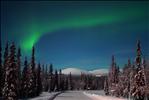


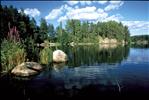
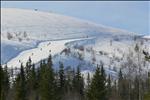
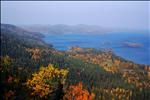




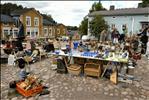
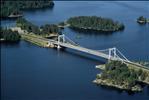

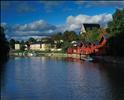
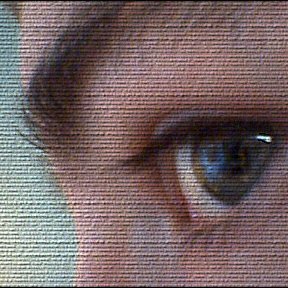
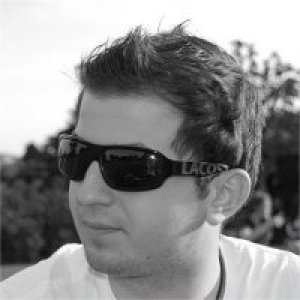

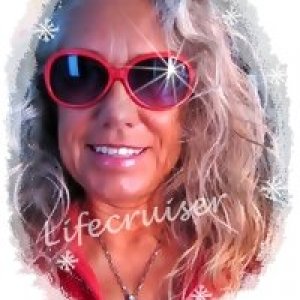

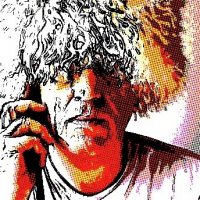







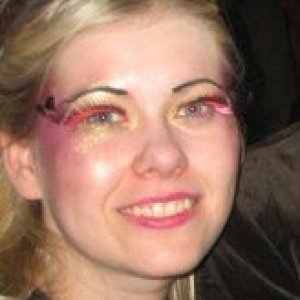

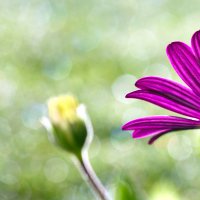
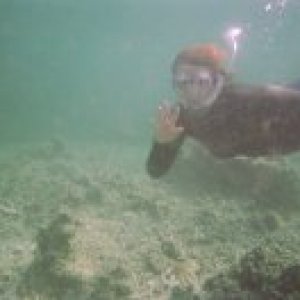
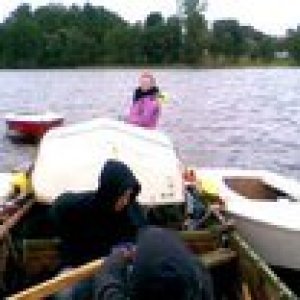

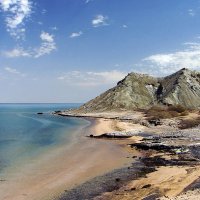

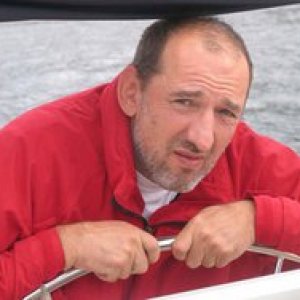


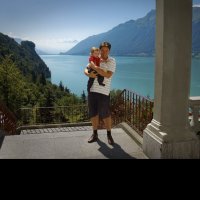



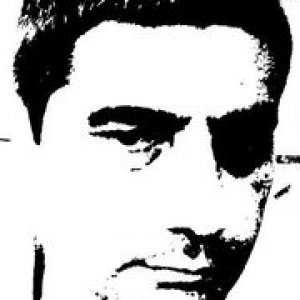

















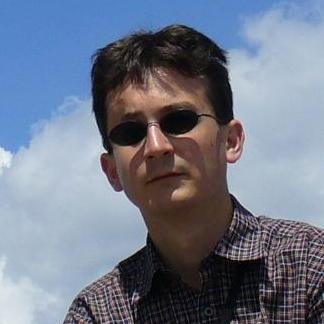





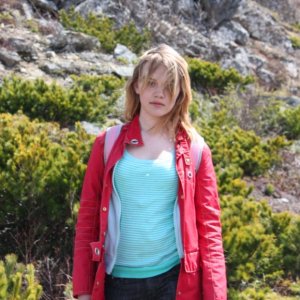
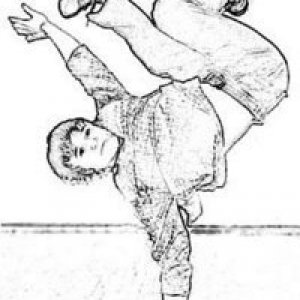
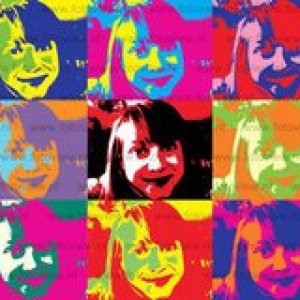



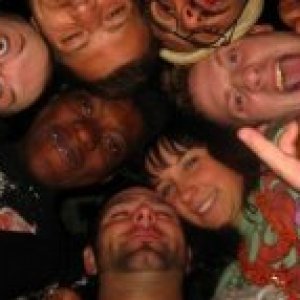

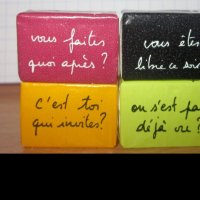
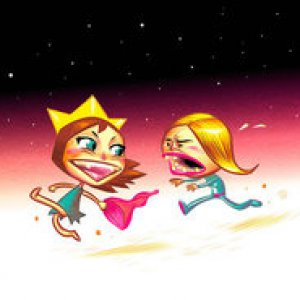

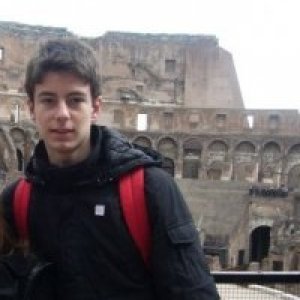



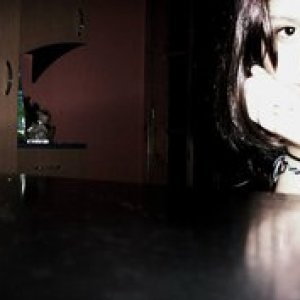
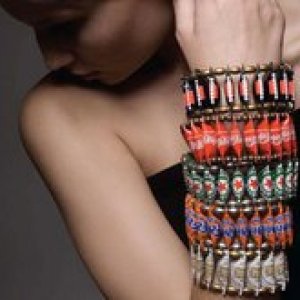









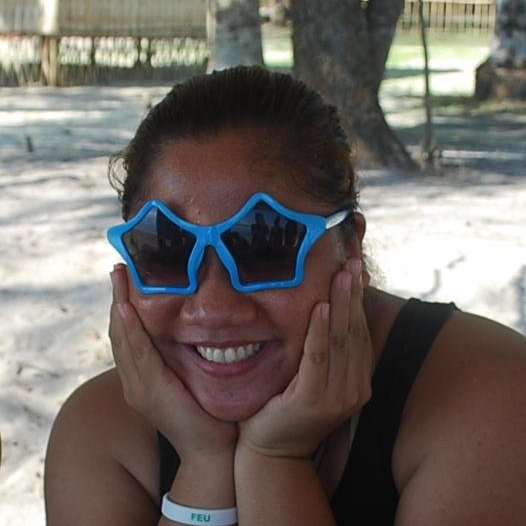

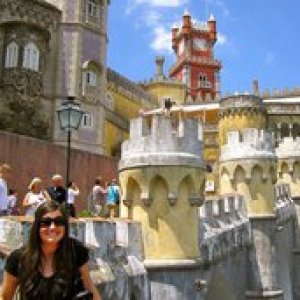


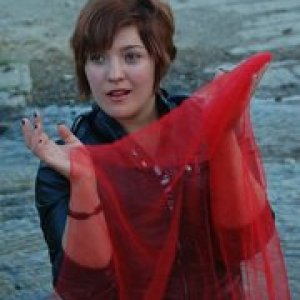

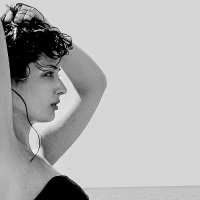
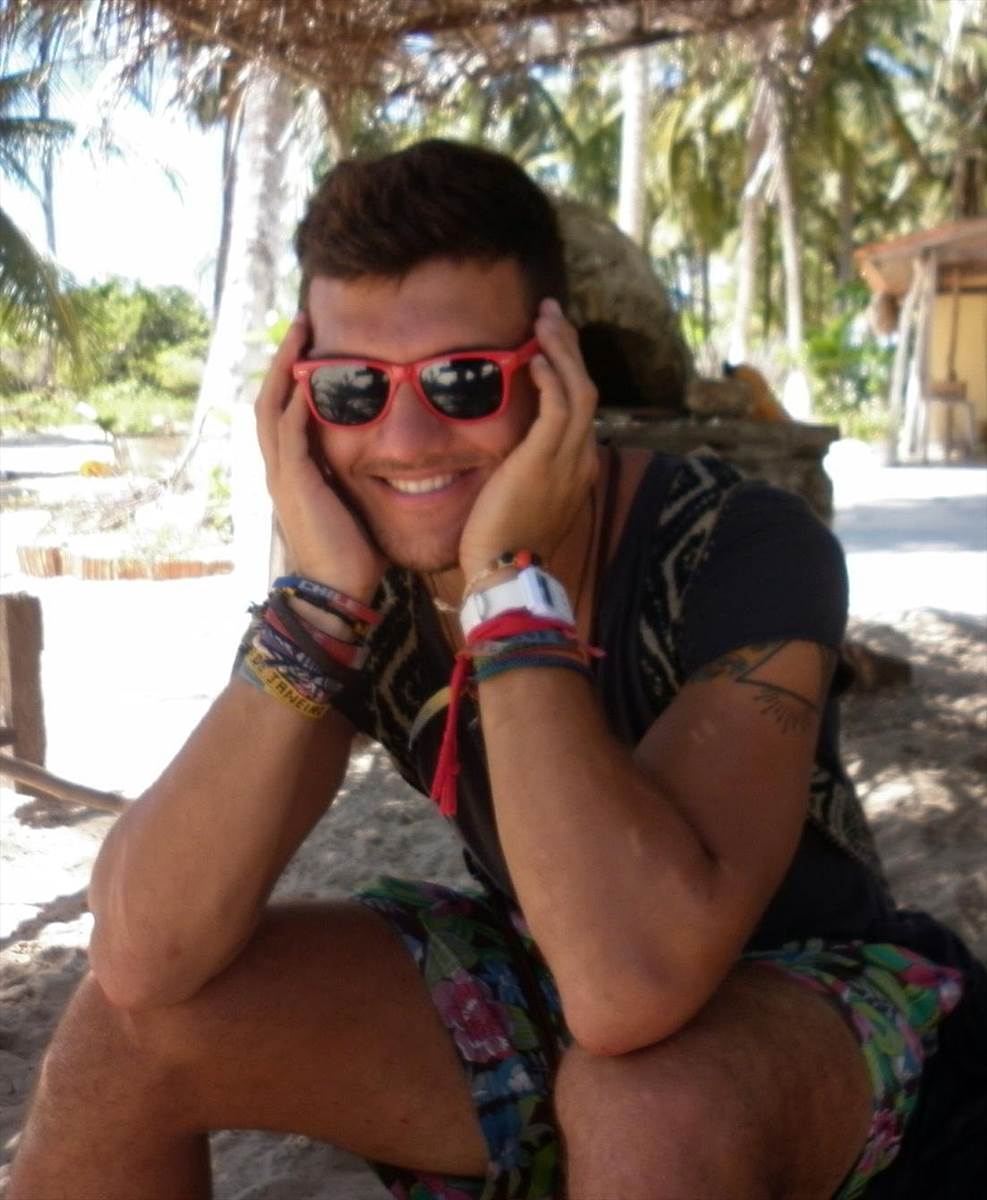

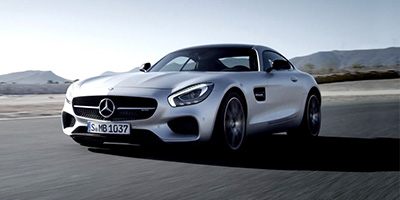




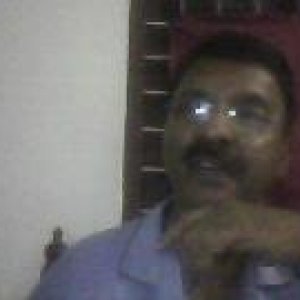
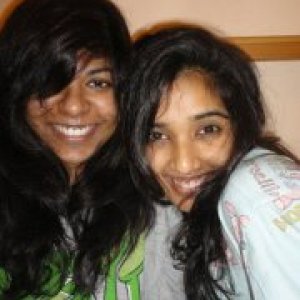

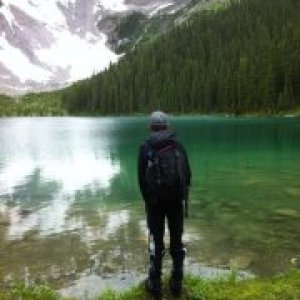
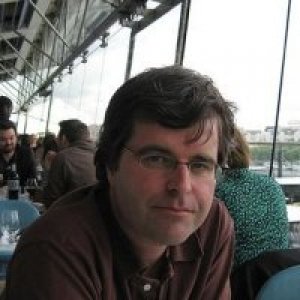




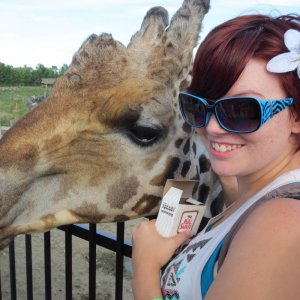
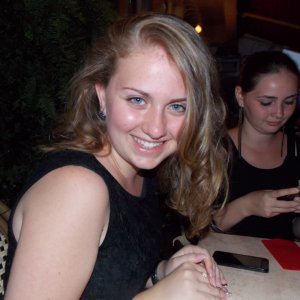
I liked
(Finland is one of those places that'll divide people to 'likers' and 'haters'. It all depends on one's goals and preferances.) +clean air and nature +easy to find a place for relaxation in the middle of nowhere +nature +fishing waters in Lapland +lakes and rivers +Northern Lights +snow and ice +summer & summer music festivals +many people speak English, good for travelers +gentle variety between different areas of the country +easy to do most sports +silenceI disliked
(Finland is one of those places that'll divide people to 'likers' and 'haters'. It all depends on one's goals and preferances.) -expensive -Helsinki area -the closing hours of bars -small countryside towns -the people who are distant and quite cold unless they know you -living in F. -attitudes of 'certain' people -the government